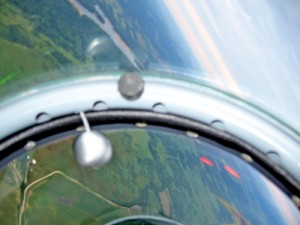by Ed Leineweber
According to the FAA, although the accident/incident rate for sport pilots remains very close to the overall rate for general aviation operations under Part 91, incident and accident reports for sport pilots and light sport aircraft show increasing trends in the following six areas: loss of control; first flight; transition; power loss; maintenance; and airport selection.
Ron Wanttaja, a well-known independent aviation accident analyst, noted in a recent Kitplanes magazine article that while only 18% of all U.S. aircraft accidents result in fatalities, the homebuilt aircraft fatal accident rate is about 25%. Ron’s analysis of the primary causal factors told a familiar story: maneuvering at low altitude; VFR into IMC; fuel mismanagement; and inadequate preflight inspection.
The FAA, now conducting its second annual “Safety Standdown,” is pursuing four themes: positive flight (mental) attitude; going beyond preflight; en route cruise; and maneuvering flight. Notice any pattern here?
If you do, you are well on your way to anticipating the subject matter of a series of presentations to pilot groups I will be making this year as a member of the Wisconsin FAA Safety Team.

Low-altitude aerobatics, low-altitude stalls, descent into terrain, and collision with obstacles, in that order, account for almost all of the causes of fatal accidents in homebuilt aircraft attributed to pilot judgment errors.
We will be exploring what can be learned from accident statistics as well as specific mishaps of the past, discussing strategies and procedures to avoid becoming a statistic ourselves, and teaching each other what we have learned over our years of building, maintaining and flying light aircraft. Particular emphasis will be on experimental aircraft, including amateur-built and Experimental Light Sport Aircraft (E-LSA), and on flight testing and first flights (even as a second or subsequent aircraft owner), transition training to unfamiliar aircraft, basic stick-and-rudder skills, preflight preparation, and in-flight aeronautical decision-making.
This two-hour presentation will be available free of charge to any EAA chapter, flying club, pilot organization or flight training operation that would like to have me show up and facilitate a mutual learning experience. While the backbone of the presentation will be an FAA PowerPoint on “Sport Aviation Safety,” additional information will be incorporated, gleaned from many other sources, including on-going discussions with pilots, maintenance technicians, flight instructors, FAA personnel and others. It should be a great opportunity to focus on safety in a positive, productive, enjoyable format.
As they say, safety is no accident. Serious attention to accident prevention can yield life-saving dividends.
EDITOR’S NOTE: Pilot groups interested in scheduling this program should contact Ed Leineweber at edleine@countryspeed.com, or by calling 608-604-6515.











